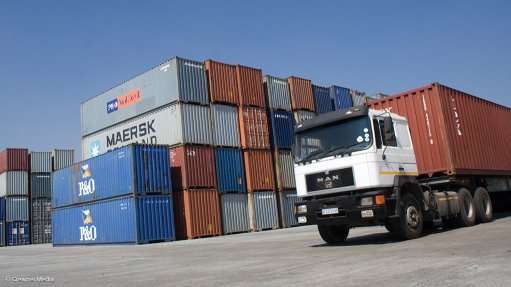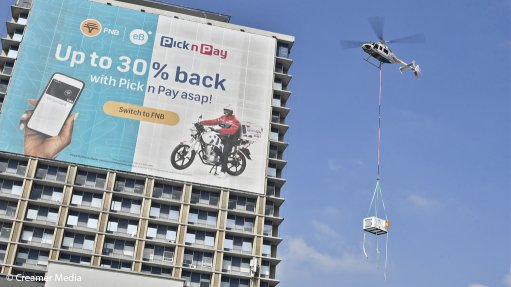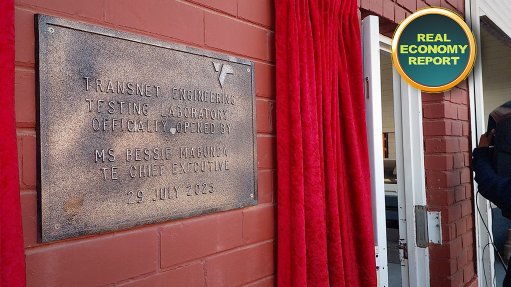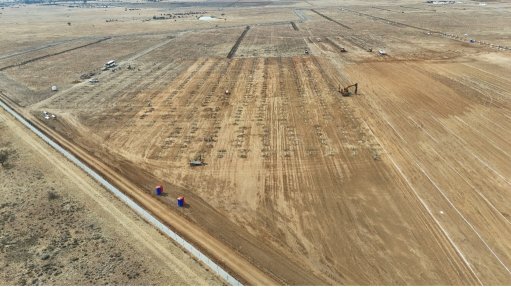Opinion: Speedbumps, not roadblocks, beckon South African bakkie builders
In this opinion article, Ford Motor Company of Southern Africa sales operations executive director Dhiren Vanmali writes that South Africa's hosting of the Africa Growth and Opportunity Act (Agoa) Forum in November is an important opportunity to capitalise on the country’s prowess as an automotive and export powerhouse that’s in step with trends among buyers and motorists locally and globally.
It’s acknowledged that South Africa’s automakers are very good at building pickup trucks – bakkies as well call them locally – that people like to own and drive. Those of us who live and breathe the business know this, but it’s gratifying when the statistics confirm our understanding.
The recent 2023 AutoTrader Mid-Year Car Industry Report for the first half of 2023 found, for example, that the Ford Ranger was the top-selling used car model in South Africa in that period.
The average vehicle sold was a 2018 model with mileage of 74 711 km and was listed for R427 838. By comparison, the average Ranger sold was a 2010 model with mileage of 90 659 km and was listed for R433 371.
In other words, when built right and in step with trends in owner preference, vehicles retain both their residual value and market appeal. In the case of the Ranger, its value proposition outweighs that of passenger vehicles.
It may be partly because many of our roads are suited to vehicles with decent ground-clearance and sturdy suspension. But the appeal of bakkies goes beyond our shores: seven of every ten Rangers that roll off our production line every two minutes is driven on to a ship for export to 100 markets worldwide. A few weeks later, each becomes part of someone’s life in Nigeria, Germany or Mexico.
Every Ranger driven by the officers of the UK’s Midland Police, for example, was made at our plant in Silverton. It’s why Ford’s exports account for more than 1% of South Africa’s gross domestic product (GDP), bringing home crucial forex income. For all this, credit must go to every member of our personnel and everyone in our supply-chain.
But this isn’t a hagiography of Ford. Our peers in the original-equipment manufacturer (OEM) space and the automotive sector all perform well, often under difficult economic conditions.
Rather, this is a missive on how the role of the automotive sector – and its benefits to South Africa’s economy and the country's citizens – must be leveraged.
There are several points to note: The first is our treasured relationship with our trading partners, and the agreements which secure them. A prime example is Agoa, which has, since 2001, allowed tariff- and quota-free free trade between South Africa and the US, and which is due for renewal before its expiry in 2025. naamsa | the Automotive Business Council and the Automotive Industry Export Council recently released a research report making a clear case for an extension to this crucial trade preference programme.
naamsa believes Agoa has become a powerful symbol of the commitment the US and Africa have made to one another’s prosperity. It regards Agoa as a bedrock of trade relations between the two regions and facilitated regional integration. South Africa was Africa’s biggest beneficiary of Agoa in 2022, exporting goods to the US worth R178-billion, outweighing imports worth R134-billion.
This is especially relevant for South Africa’s automotive sector, which has accounted for 99% of Africa’s automotive exports to the US since Agoa’s inception.
Last year, the US comprised the local automotive industry’s second-largest export destination, the sixth-largest country of origin and second-largest trading partner.
In numbers: total automotive exports to the US amounted to R24.1-billion in 2022, while automotive imports from the US totalled R18.3-billion.
This trade arrangement has provided impetus for the domestic automotive sector’s vehicle export drive to the US, which increased from 853 units in 2000 to 14 873 units in 2001 when Agoa was initiated, a massive increase of 1 643.6%.
That’s contributed to the creation of about 85 000 direct jobs and 426 000 indirect jobs in this country. So the announcement was gratifying that the South African Department of Trade, Industry and Competition will co-host the Agoa Forum for 2023 in Johannesburg from November 2 to 4.
The second factor of which anyone in the automotive sector in Africa must be aware is the African Continental Free Trade Area (AfCFTA). A recent World Economic Forum (WEF) report on AfCFTA’s potential benefits to Africa’s automotive sector found an average annual demand for 24-million motor cars and 300 000 commercial vehicles. For now, this demand – which is rising due to the continent-wide increase in a middle-class with disposable income, and rapid urbanisation – is still being met primarily by imported used vehicles.
But domestic production has increased an average 7% a year in recent years. Morocco and South Africa are leading players in the automotive sector, making up 80% of African exports, with Algeria also experiencing rapid growth.
In the broader African context, the potential for growth is vast: a report by the Japan International Cooperation Agency (JICA) and the Boston Consulting Group found that vehicle sales on the continent in 2021 equalled those of Spain, which has one-thirtieth of Africa’s population. The report describes Africa as “the next frontier globally”. With the right investment in infrastructure and lawmakers’ commitment, that potential is ripe for growth.
That underscores AfCFTA’s role in unlocking opportunities upon which African and global businesses in the automotive industry can seize, culminating in a new era of frictionless intracontinental trade.
If this is done right, the sector will benefit from the economies of scale that are essential for competitive automotive manufacture: the authors cite reduced tariffs across the continent for inputs like aluminium from Mozambique and rubber in Côte d’Ivoire.
The WEF says it sees “significant political will by African governments and private sector players to develop automotive regional value chains because of the sector’s historic contribution to industrialisation.”
So far, so promising. We must of course, as a sector, ensure that a number of potential hurdles are cleared: South Africa’s path to becoming a superpower in electric vehicle (EV) is not yet secure. That must be done, and speedily. Our understanding is that it’s receiving the attention it deserves.
The well-documented problems with Transnet’s road and rail network and port operations must be ironed out.
Lastly, OEMs and the entire automotive supply chain must ensure its products remain affordable in the face of rising input costs and overheads. It’s not a time for the faint-hearted to be in business, and the automotive sector is no exception.
Despite a tough environment, it contributes 4.9% to GDP (2.9% manufacturing and 2.0% retail). Last year, the export of vehicles and automotive components totalled a record R227.3-billion, accounting for 12.4% of South Africa’s total exports. In a country with the world’s highest unemployment rate, the industry employs nearly 460 000 people, each a breadwinner.
In a sense, the rugged capability of the bakkie is an analogy for South Africa’s automotive sector: agile, versatile, suited to overcoming obstacles, and for expansion on the continent with products suited to rugged, diverse environments and terrain. We in the business have our work cut out and a role to play. Tough, exciting times ahead.
Comments
Announcements
What's On
Subscribe to improve your user experience...
Option 1 (equivalent of R125 a month):
Receive a weekly copy of Creamer Media's Engineering News & Mining Weekly magazine
(print copy for those in South Africa and e-magazine for those outside of South Africa)
Receive daily email newsletters
Access to full search results
Access archive of magazine back copies
Access to Projects in Progress
Access to ONE Research Report of your choice in PDF format
Option 2 (equivalent of R375 a month):
All benefits from Option 1
PLUS
Access to Creamer Media's Research Channel Africa for ALL Research Reports, in PDF format, on various industrial and mining sectors
including Electricity; Water; Energy Transition; Hydrogen; Roads, Rail and Ports; Coal; Gold; Platinum; Battery Metals; etc.
Already a subscriber?
Forgotten your password?
Receive weekly copy of Creamer Media's Engineering News & Mining Weekly magazine (print copy for those in South Africa and e-magazine for those outside of South Africa)
➕
Recieve daily email newsletters
➕
Access to full search results
➕
Access archive of magazine back copies
➕
Access to Projects in Progress
➕
Access to ONE Research Report of your choice in PDF format
RESEARCH CHANNEL AFRICA
R4500 (equivalent of R375 a month)
SUBSCRIBEAll benefits from Option 1
➕
Access to Creamer Media's Research Channel Africa for ALL Research Reports on various industrial and mining sectors, in PDF format, including on:
Electricity
➕
Water
➕
Energy Transition
➕
Hydrogen
➕
Roads, Rail and Ports
➕
Coal
➕
Gold
➕
Platinum
➕
Battery Metals
➕
etc.
Receive all benefits from Option 1 or Option 2 delivered to numerous people at your company
➕
Multiple User names and Passwords for simultaneous log-ins
➕
Intranet integration access to all in your organisation




















